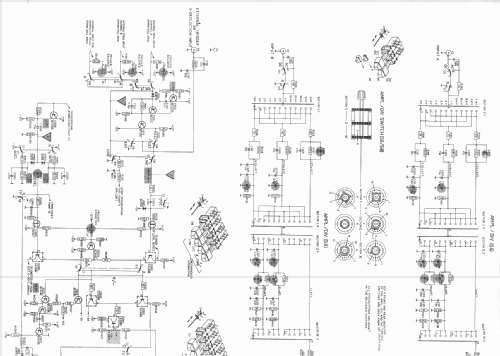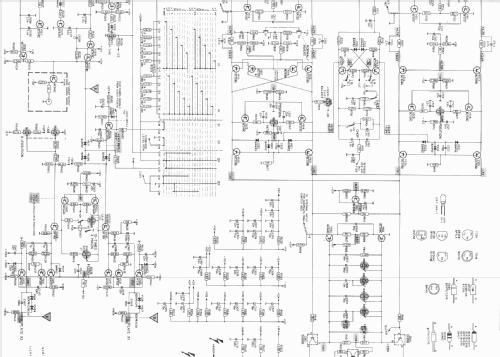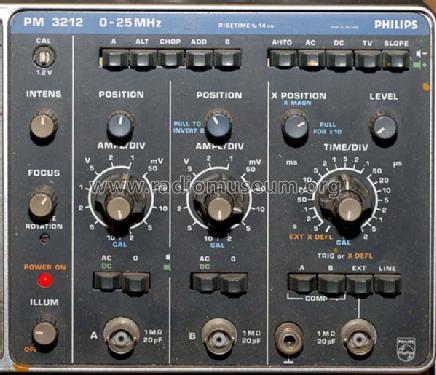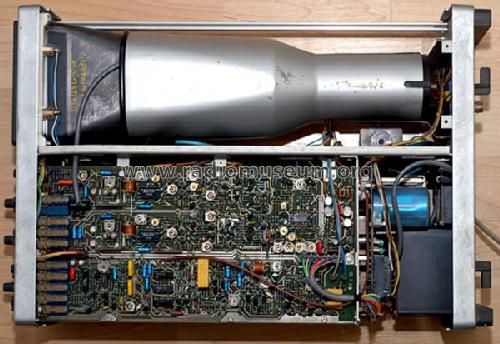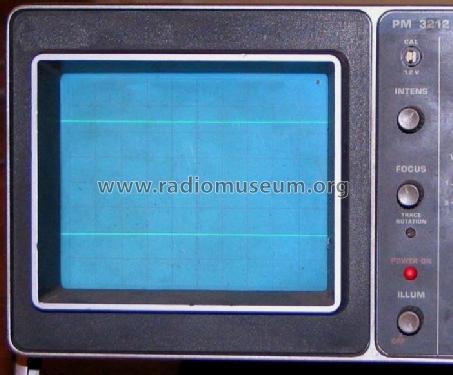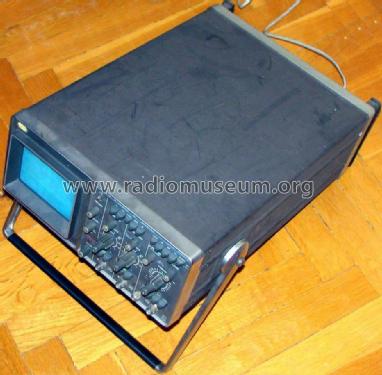Zweikanal-Oszilloskop PM3212
Philips; Eindhoven (tubes international!); Miniwatt
- Country
- Netherlands
- Manufacturer / Brand
- Philips; Eindhoven (tubes international!); Miniwatt
- Year
- 1977
- Category
- Service- or Lab Equipment
- Radiomuseum.org ID
- 94547
Click on the schematic thumbnail to request the schematic as a free document.
- Number of Tubes
- 1
- Valves / Tubes
- D14-125GH/08
- Number of Transistors
- Semiconductors present.
- Semiconductors
- Wave bands
- - without
- Power type and voltage
- Alternating Current supply (AC) / 110, 127, 220, 240 Volt
- Material
- Metal case
- from Radiomuseum.org
- Model: Zweikanal-Oszilloskop PM3212 - Philips; Eindhoven tubes
- Shape
- Tablemodel, with any shape - general.
- Dimensions (WHD)
- 300 x 137 x 445 mm / 11.8 x 5.4 x 17.5 inch
- Notes
- 25 MHz Zweikanal-Oszilloskop
- Net weight (2.2 lb = 1 kg)
- 7.9 kg / 17 lb 6.4 oz (17.401 lb)
- Source of data
- - - Data from my own collection
- Literature/Schematics (1)
- -- Original-techn. papers.
- Author
- Model page created by Michael Münch. See "Data change" for further contributors.
- Other Models
-
Here you find 5274 models, 4420 with images and 3458 with schematics for wireless sets etc. In French: TSF for Télégraphie sans fil.
All listed radios etc. from Philips; Eindhoven (tubes international!); Miniwatt
Collections
The model Zweikanal-Oszilloskop is part of the collections of the following members.
Forum contributions about this model: Philips; Eindhoven: Zweikanal-Oszilloskop PM3212
Threads: 1 | Posts: 10
Guten Abend,
ich besitze seit bestimmt 15 Jahren das oben genannte Philips-Oszilloskop. Erst seit einiger Zeit habe ich damit ein eigenartiges Problem: die Gehäuselackierung wird klebrig!
Bei der Lackierung handelt es sich um eine matt-rauhe Oberfläche, die am ehesten dem nahekommt, was in einem Beitrag von Herrn Renz als Runzel- oder Kräusellack bezeichnet wird, hier aber mit einer sehr feinen Struktur.
Die Oberfläche fühlt sich klebrig an, zieht auch Schmutz an - Staubteile lassen sich nicht mehr abwischen - allerdings ohne dass sich Farbpartikel lösen würden. Selbst fest aufgeriebenes Klebeband nimmt beim Abreißen keine Partikel mit.
Was tun?
ich besitze seit bestimmt 15 Jahren das oben genannte Philips-Oszilloskop. Erst seit einiger Zeit habe ich damit ein eigenartiges Problem: die Gehäuselackierung wird klebrig!
Bei der Lackierung handelt es sich um eine matt-rauhe Oberfläche, die am ehesten dem nahekommt, was in einem Beitrag von Herrn Renz als Runzel- oder Kräusellack bezeichnet wird, hier aber mit einer sehr feinen Struktur.
Die Oberfläche fühlt sich klebrig an, zieht auch Schmutz an - Staubteile lassen sich nicht mehr abwischen - allerdings ohne dass sich Farbpartikel lösen würden. Selbst fest aufgeriebenes Klebeband nimmt beim Abreißen keine Partikel mit.
Was tun?
Michael Münch, 09.Apr.06
